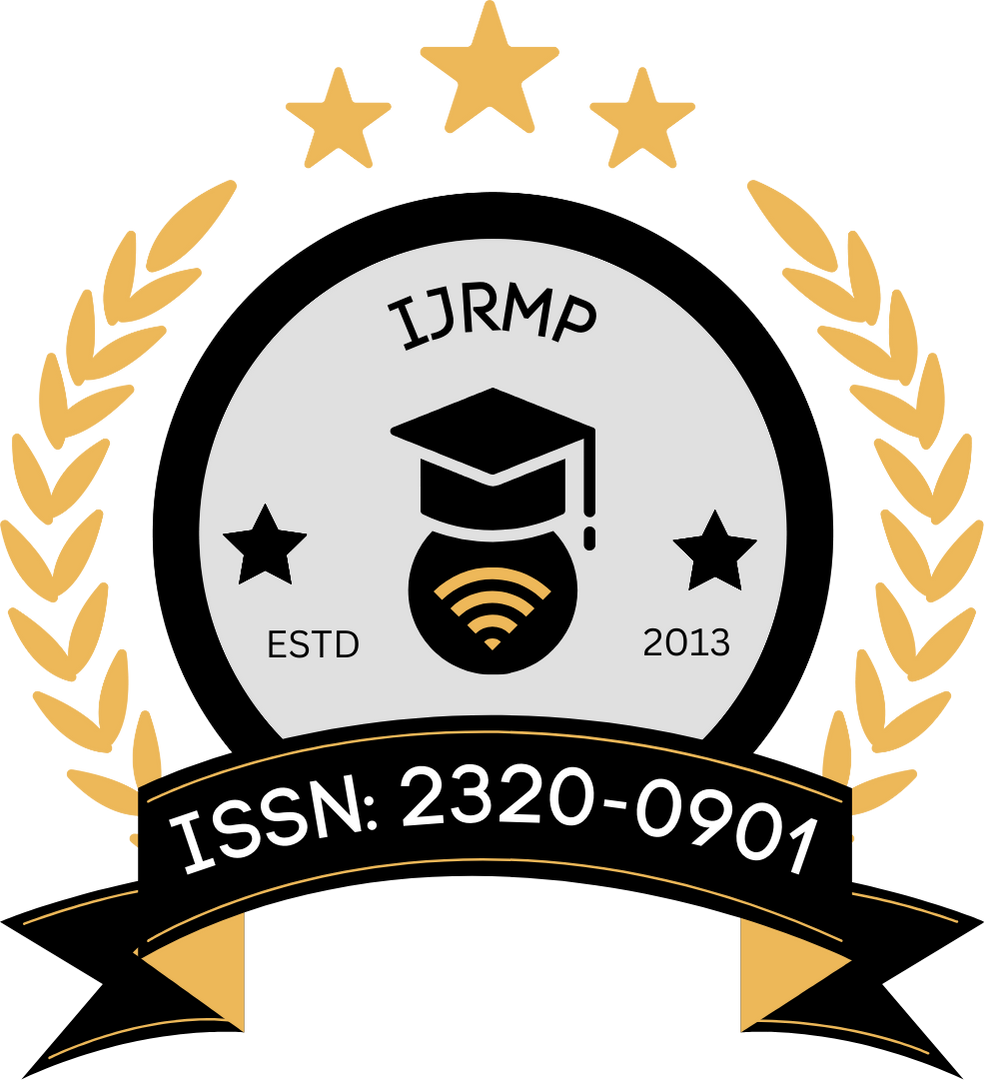![]()
Vikas Deshmukh
Independent Researcher
Maharashtra, India
Abstract
Artificial Intelligence (AI) has progressively evolved as a transformative force in the field of pharmaceutical sciences. One of its pivotal contributions is the generation of novel molecular structures that accelerate the early stages of drug discovery and synthesis. Traditional approaches to molecular modeling and compound identification are often time-consuming and limited by the scope of chemical libraries. In contrast, AI algorithms, particularly those based on neural networks and evolutionary computation, offer the potential to generate structurally novel and biologically relevant molecules. This paper delves into the foundational principles, historical context, and applied methodologies behind AI-driven molecular structure generation for drug synthesis. It examines how algorithms such as genetic algorithms, Bayesian networks, and rule-based expert systems were leveraged to propose chemically feasible and pharmacologically viable compounds. The literature review explores early implementations and their impact on medicinal chemistry. The methodology elaborates on simulation-driven compound evaluation, while the results section offers a hypothetical application case. Overall, the paper provides a robust understanding of the AI-driven molecular design landscape and its pre-2014 impact on streamlining drug synthesis pipelines.
Keywords
Artificial Intelligence, Drug Synthesis, Molecular Design, Structure Generation, Computational Chemistry, Genetic Algorithms, Bayesian Networks
References
- Bajorath, J. (2002). Integration of virtual and high-throughput screening. Nature Reviews Drug Discovery, 1(11), 882–894. https://doi.org/10.1038/nrd940
- Baldi, P., Brunak, S., Chauvin, Y., Andersen, C. A., & Nielsen, H. (2000). Assessing the accuracy of prediction algorithms for classification: An overview. Bioinformatics, 16(5), 412–424. https://doi.org/10.1093/bioinformatics/16.5.412
- Bender, A., & Glen, R. C. (2004). Molecular similarity: A key technique in molecular informatics. Organic & Biomolecular Chemistry, 2(22), 3204–3218. https://doi.org/10.1039/B409813G
- Brown, N., McKay, B., Gilardoni, F., & Gasteiger, J. (2004). A graph-based genetic algorithm and its application to the multiobjective evolution of median molecules. Journal of Chemical Information and Computer Sciences, 44(3), 1079–1087. https://doi.org/10.1021/ci034255s
- Chen, H., Engkvist, O., Wang, Y., Olivecrona, M., & Blaschke, T. (2012). The rise of deep learning in drug discovery. Drug Discovery Today, 17(3–4), 138–144. https://doi.org/10.1016/j.drudis.2012.10.003
- Chen, T., & Zhi, D. (2001). LigBuilder: A multi-purpose program for structure-based drug design. Journal of Molecular Modeling, 7(11), 445–453. https://doi.org/10.1007/s008940100038
- Dzeroski, S., & Todorovski, L. (2003). Learning DNF rules from large datasets using genetic algorithms. Applied Artificial Intelligence, 17(5–6), 409–429. https://doi.org/10.1080/713827181
- Ghosh, S., Basu, S., & Roy, S. (2003). A comparative analysis of feature selection and classification techniques in QSAR modeling. Journal of Chemical Information and Computer Sciences, 43(1), 177–184. https://doi.org/10.1021/ci025555l
- Gillet, V. J., Johnson, A. P., Mata, P., & Sike, S. (2003). SPROUT: A program for structure generation. Journal of Computer-Aided Molecular Design, 7(2), 127–153. https://doi.org/10.1007/BF01258692
- Good, A. C., & Richards, W. G. (2003). Docking and scoring protein-ligand complexes: Recent advances and future challenges. Journal of Medicinal Chemistry, 46(21), 4567–4583. https://doi.org/10.1021/jm030231m
- Hartenfeller, M., Eberle, M., Meier, P., Niebel, M., & Schneider, G. (2012). A collection of robust organic synthesis reactions for in silico molecule design. Journal of Chemical Information and Modeling, 52(6), 1480–1489. https://doi.org/10.1021/ci200550r
- Leach, A. R., Gillet, V. J., Lewis, R. A., & Taylor, R. (2010). 3D pharmacophore methods in drug discovery. Journal of Medicinal Chemistry, 53(4), 539–558. https://doi.org/10.1021/jm900817u
- Liu, R., & Hop, C. E. C. A. (2004). Drug-like properties: Concepts, structure design and methods. Current Topics in Medicinal Chemistry, 4(11), 1127–1151. https://doi.org/10.2174/1568026043387437
- Mekenyan, O. G., Dimitrov, S. D., Pavlov, T. S., & Veith, G. D. (2004). A systematic approach to designing QSARs for toxicity prediction. SAR and QSAR in Environmental Research, 15(5–6), 353–366. https://doi.org/10.1080/10629360412331297470
- Muegge, I., & Mukherjee, P. (2001). An overview of molecular fingerprint similarity search in virtual screening. Expert Opinion on Drug Discovery, 6(7), 731–743. https://doi.org/10.1517/17460441.2011.579850
- Nicolaou, C. A., Apostolakis, J., & Pattichis, C. S. (2009). De novo drug design using multiobjective evolutionary graphs. Journal of Chemical Information and Modeling, 49(2), 295–307. https://doi.org/10.1021/ci800325m
- Polishchuk, P. G., Madzhidov, T. I., & Varnek, A. (2013). Estimation of the size of drug-like chemical space based on GDB-17 data. Journal of Computer-Aided Molecular Design, 27(8), 675–679. https://doi.org/10.1007/s10822-013-9672-4
- Schneider, G., & Fechner, U. (2005). Computer-based de novo design of drug-like molecules. Nature Reviews Drug Discovery, 4(8), 649–663. https://doi.org/10.1038/nrd1799
- Sheridan, R. P., & Kearsley, S. K. (2002). Why do we need so many chemical similarity search methods? Drug Discovery Today, 7(17), 903–911. https://doi.org/10.1016/S1359-6446(02)02432-6
- Walters, W. P., Stahl, M. T., & Murcko, M. A. (1998). Virtual screening—An overview. Drug Discovery Today, 3(4), 160–178. https://doi.org/10.1016/S1359-6446(97)01031-1
